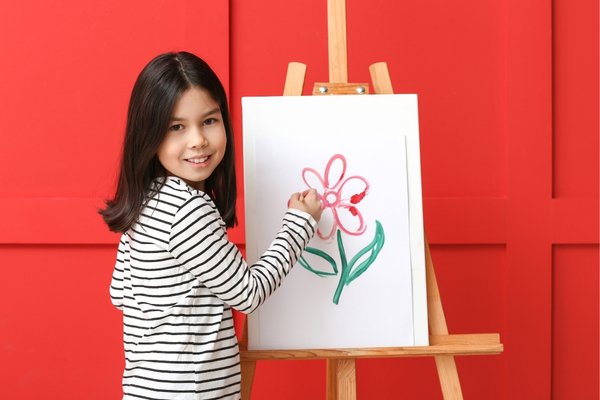Introduction
Color composition is a fundamental element in painting that can transform a simple scene into a dynamic and engaging environment. For beginner painters, mastering color composition is essential in developing a visual narrative that draws the viewer into the artwork. This article explores various techniques and principles of color composition, providing detailed guidance to help you harness the power of color to elevate your environmental paintings.
Understanding Color Composition
At its core, color composition involves the thoughtful arrangement of hues, tones, and shades within your painting. It is not just about selecting attractive colors but also about understanding how colors interact, influence each other, and contribute to the overall mood and depth of the piece. Recognizing the relationships between warm and cool colors, complementary pairs, and analogous schemes will allow you to create balanced, visually appealing works.
The Importance of the Color Wheel
One of the most useful tools for understanding color relationships is the color wheel. By exploring the color wheel, beginners can identify:
- Complementary Colors: Pairs such as blue and orange or red and green that create strong contrasts and vibrant energy.
- Analogous Colors: Colors next to each other on the wheel that produce harmony and a sense of unity.
- Triadic Schemes: Three colors evenly spaced around the wheel, offering a balanced yet dynamic palette. Experimenting with these relationships on your palette can reveal new possibilities for combining colors in your environmental scenes.
Techniques to Enhance Color Composition
- Layering and Blending:
Begin with a monochromatic underpainting to establish the tonal values of your scene. Once the basic structure is in place, layer colors gradually, blending where necessary to create smooth transitions. This approach not only adds depth but also helps in maintaining a cohesive color structure throughout the painting. - Using Glazes:
Glazing is the process of applying thin, transparent layers of color over a dried layer. This technique can subtly shift hues and add luminosity to the work. For example, a glaze of blue over a warm underlayer can evoke the feeling of twilight, enhancing the overall mood. - Contrasting Warm and Cool Tones:
A balanced interplay between warm and cool tones can create a dynamic environment. Warm colors can evoke energy and intimacy, while cool colors bring calm and depth. Experiment by allocating warm hues to focal points and cool tones to background elements, which will lead to a balanced and engaging composition. - Creating Focal Points:
Utilize color contrasts to guide the viewer’s eye toward the focal point of your painting. A bright or saturated area surrounded by more muted tones can naturally draw attention. Consider using complementary colors to heighten this effect, ensuring that the focus stands out without overwhelming the rest of the scene. - Maintaining Visual Harmony:
Consistency is key in any successful painting. Avoid using too many competing colors by choosing a dominant color and complementing it with secondary hues that enhance rather than distract. Maintaining a limited yet versatile palette helps in creating a harmonious balance throughout your work.
Practical Exercises for Developing Color Composition Skills
- Color Studies:
Create small, focused studies where you experiment with different color schemes. Use a fixed subject, like a landscape or an interior scene, and paint multiple versions using different color compositions. This exercise helps you understand how color variations impact mood and depth. - Palette Experimentation:
Before applying colors to your main work, practice mixing on a separate palette. Create a range of values and tones by mixing your chosen colors with white, black, or even a complementary hue. Understanding these mixtures will enable you to predict how the colors will interact on your canvas. - Observation and Imitation:
Study works by master painters who excel in color composition. Analyze their use of color and try to replicate some of their techniques in your practice paintings. This observation will not only expand your color vocabulary but also provide insights into successful compositional strategies.
Overcoming Common Challenges
Beginners often struggle with creating a harmonious color composition. One common pitfall is overcomplicating the palette. To overcome this, limit your initial palette to three or four main colors and gradually expand as you gain confidence. Another challenge is maintaining consistency in tone and value across the painting. Frequent checks against your underpainting or preliminary sketches can help ensure that your color balance remains intact throughout the process.
Incorporating Environmental Elements
When painting environments, consider how natural light affects colors. Shadows, reflections, and atmospheric perspective are all influenced by color composition. Use cooler hues in distant objects to create the illusion of depth and warmer tones in the foreground to bring elements closer to the viewer. This technique not only enhances realism but also reinforces the overall balance of the painting.
Conclusion
Mastering color composition is a journey of exploration and experimentation. By understanding the relationships between colors, utilizing techniques such as layering, glazing, and controlled blending, beginner painters can create dynamic environments that captivate and engage viewers. Practice is key; each painting serves as an opportunity to refine your color intuition and develop a signature style. Embrace the process of experimentation, and soon your paintings will reflect a rich, thoughtful interplay of color that enhances the overall ambiance and narrative of your work.


